Working Remotely from Airports: Navigating the New Normal
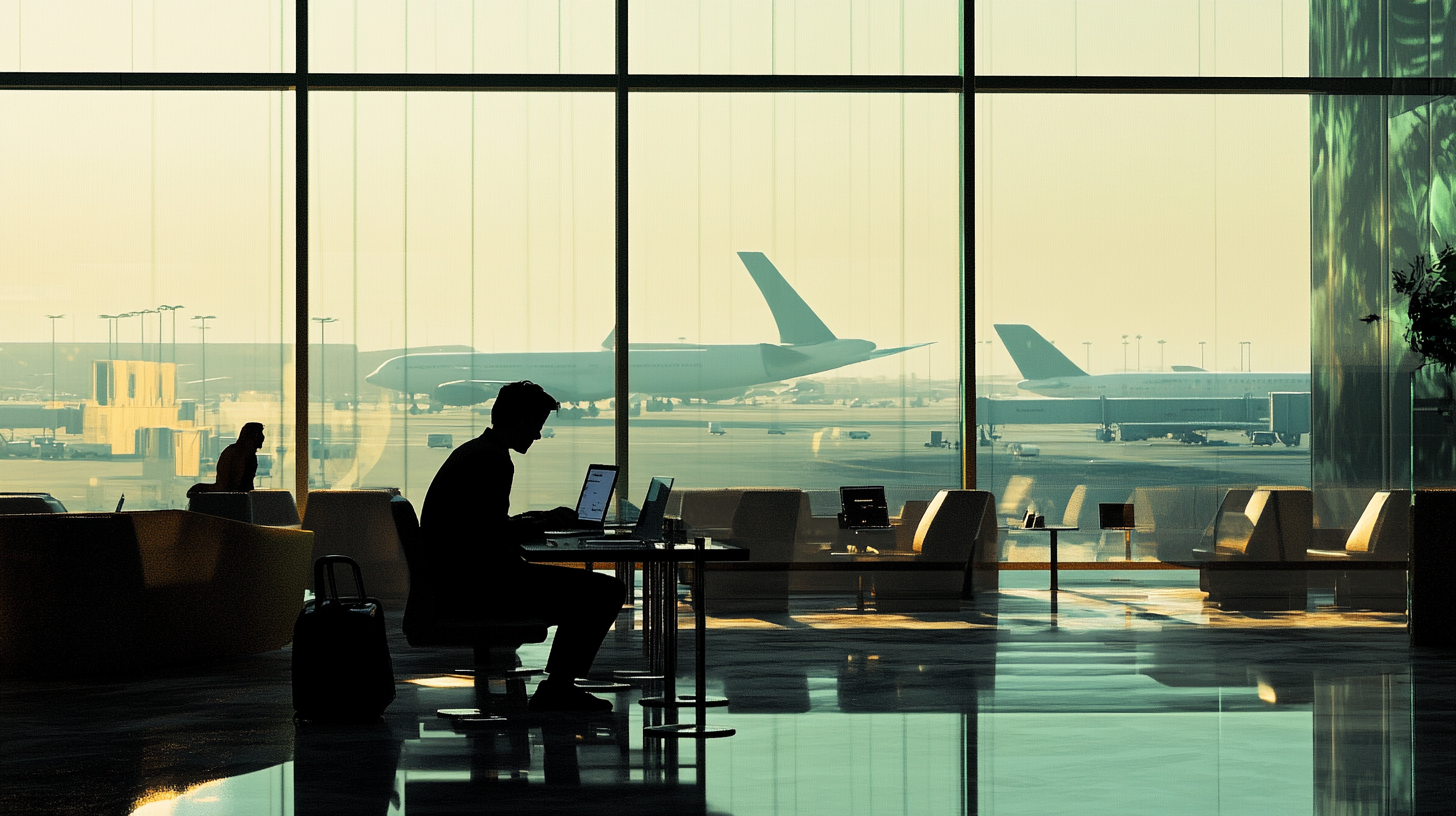
In an era where remote work has seamlessly integrated into our daily routines, airports are evolving from mere transit hubs into dynamic workspaces for the modern professional. The rise of digital nomads—individuals who leverage technology to work from anywhere—has underscored the importance of airport facilities adapting to meet the needs of this new workforce. From catching up on emails during layovers to conducting virtual meetings across time zones, the blending of work with travel has never been more prevalent. This article delves into how airports are catering to remote workers and what you need to know to maximize productivity on the go.
The Rise of Remote Work and Its Impact on Travel

The global shift towards remote work, significantly accelerated by the COVID-19 pandemic, has transformed professional landscapes worldwide. With approximately 23% of US workers operating remotely part-time as of December, according to recent studies, the traditional office environment is no longer the sole epicenter of productivity. This newfound flexibility empowers professionals to merge their work commitments with their passion for travel, turning airports into impromptu offices where business and exploration intersect. The ability to work remotely from virtually anywhere has not only redefined work-life balance but has also opened doors to opportunities that transcend geographical boundaries.
Top U.S. Airports for Remote Workers
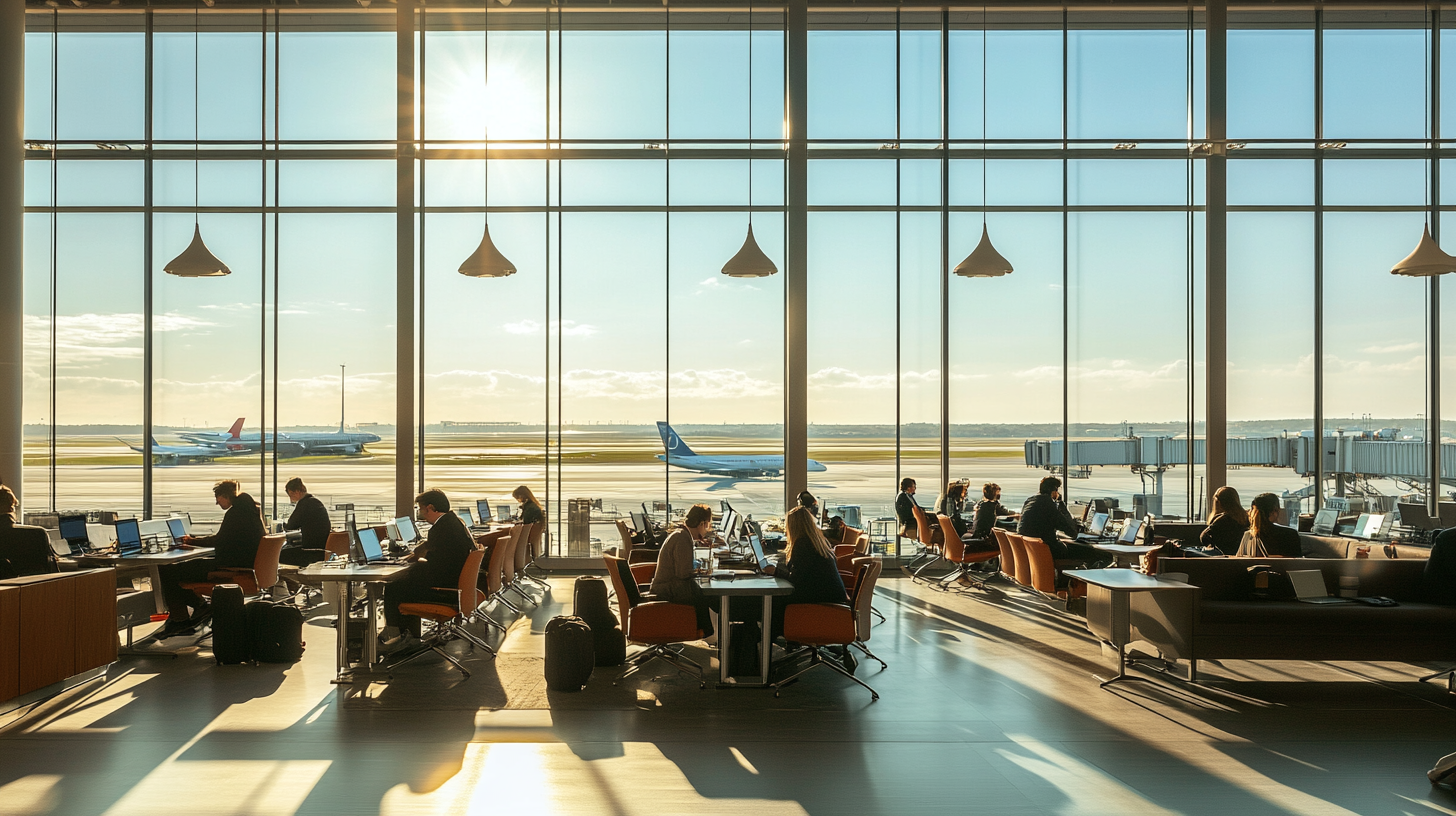
An analysis by Upgraded Points evaluated 45 of the largest U.S. airports to determine their suitability for remote work. The study considered factors such as Wi-Fi speed, availability of charging stations, number of lounges, on-time departures, and the variety of shops and restaurants. These elements are crucial for remote workers who rely on consistent connectivity and a conducive environment to maintain productivity while traveling.
1. San Diego International Airport (SAN)

Scoring the highest in the analysis, San Diego International Airport tops the list for remote workers. The airport boasts numerous charging stations, ensuring that devices remain powered throughout layovers. With its robust Wi-Fi connectivity, professionals can engage in video conferences, access cloud-based applications, and handle large file transfers with ease. Additionally, its strong on-time departure record minimizes unexpected delays, allowing for better scheduling and reducing the stress associated with travel uncertainties. The combination of these amenities creates an environment where work can continue uninterrupted, even amidst the hustle of airport activity.
2. Los Angeles International Airport (LAX)
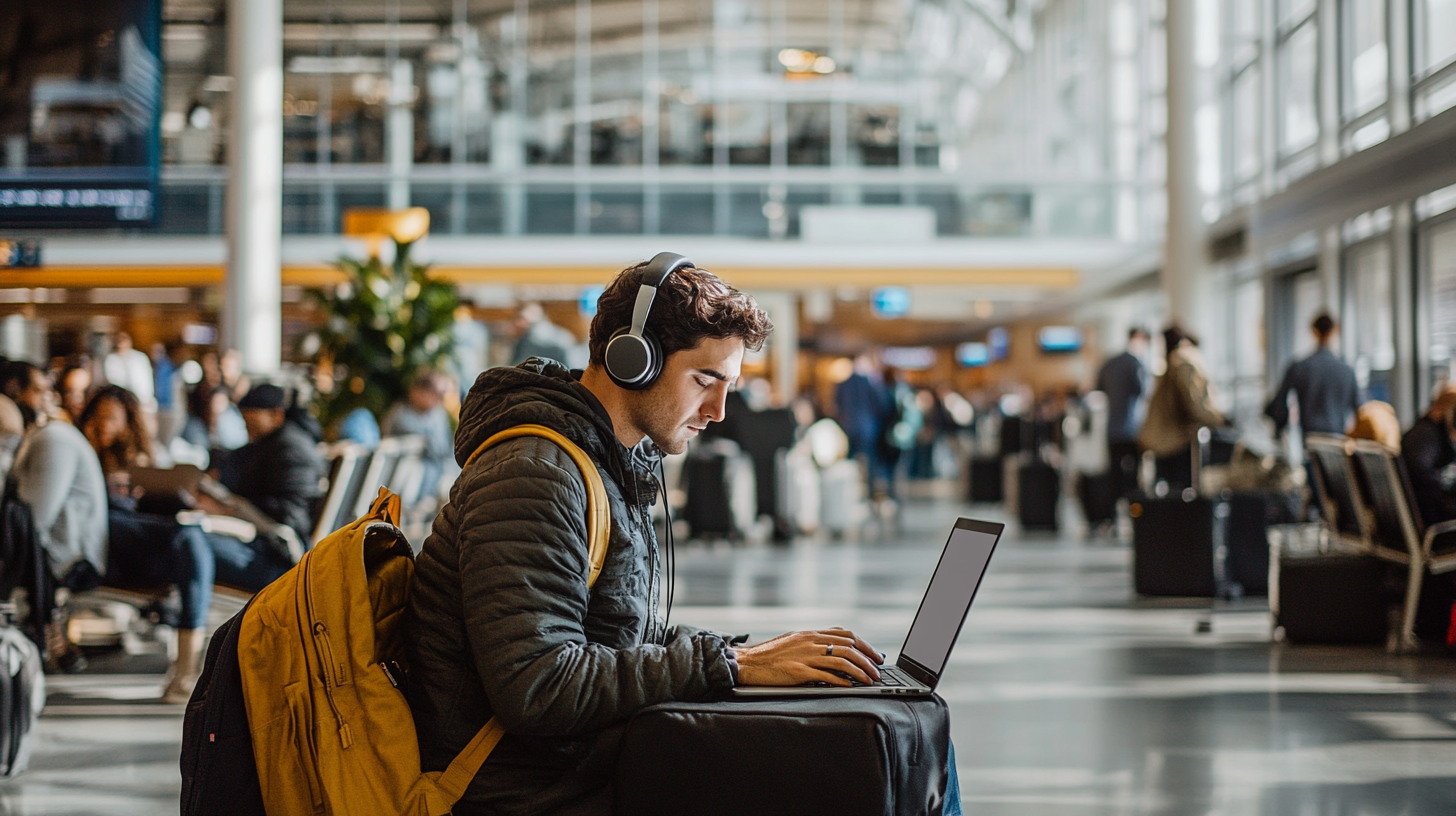
Coming in second, LAX offers extensive amenities that cater to remote workers. With multiple lounges providing quiet and comfortable spaces, professionals can work efficiently while awaiting their flights. The wide array of dining options and retail shops adds convenience, enabling travelers to manage both professional and personal needs in one location. The airport’s infrastructure supports high-speed internet connectivity, essential for tasks requiring substantial bandwidth. Whether finalizing a presentation or connecting with colleagues across the globe, LAX provides the necessary resources to facilitate productive remote work.
3. Ronald Reagan Washington National Airport (DCA)
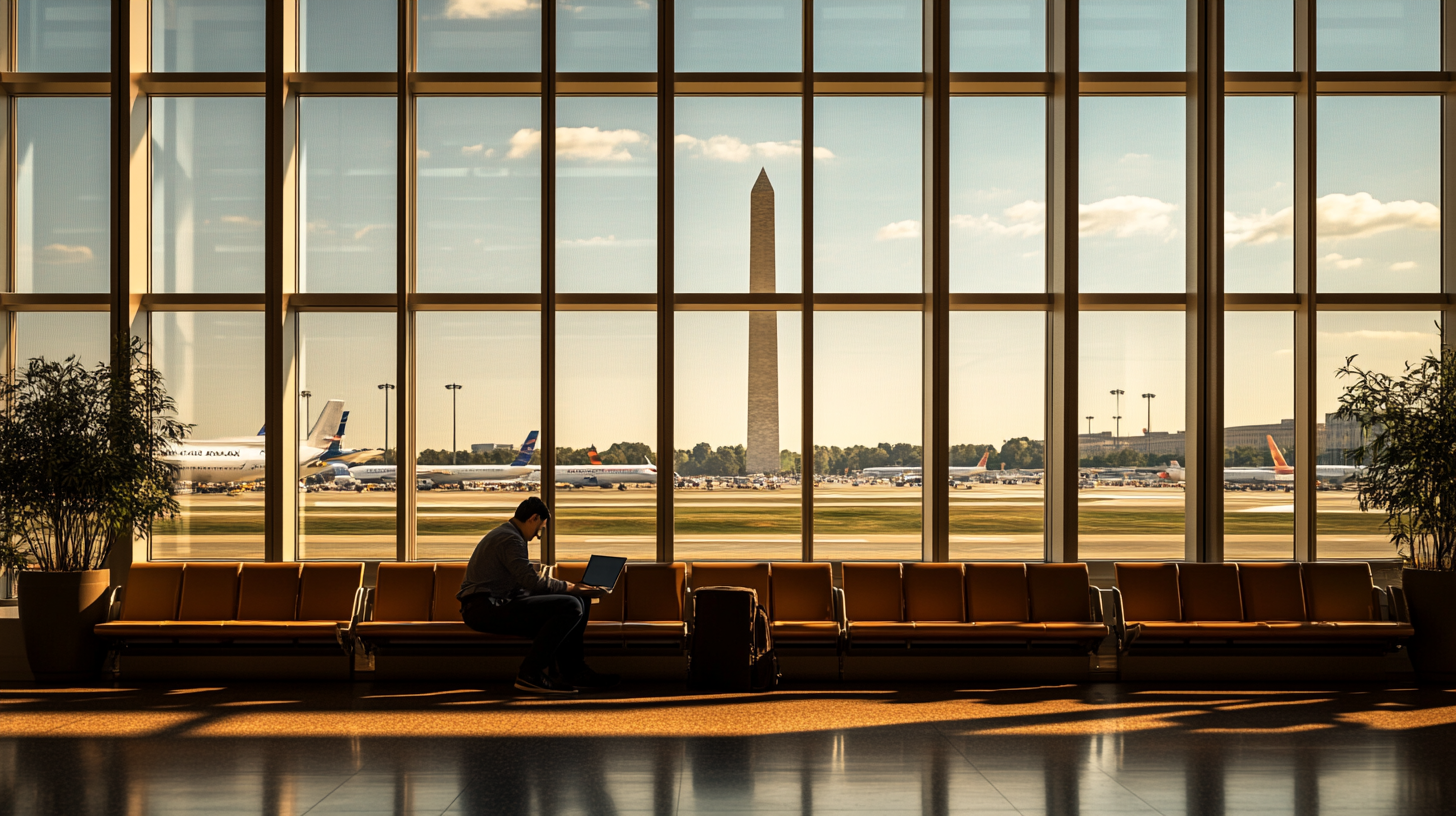
Located near the nation’s capital, DCA ranks third, providing a conducive environment for productivity. Its proximity to Washington D.C. makes it a strategic spot for professionals in governmental and corporate sectors who require reliable facilities during travel. The airport offers well-equipped lounges and accessible charging stations, ensuring that remote work can proceed smoothly. The efficient layout of the terminal allows for quick navigation between gates and amenities, maximizing the time available for work-related activities.
Honorable Mention: Dulles International Airport (IAD)
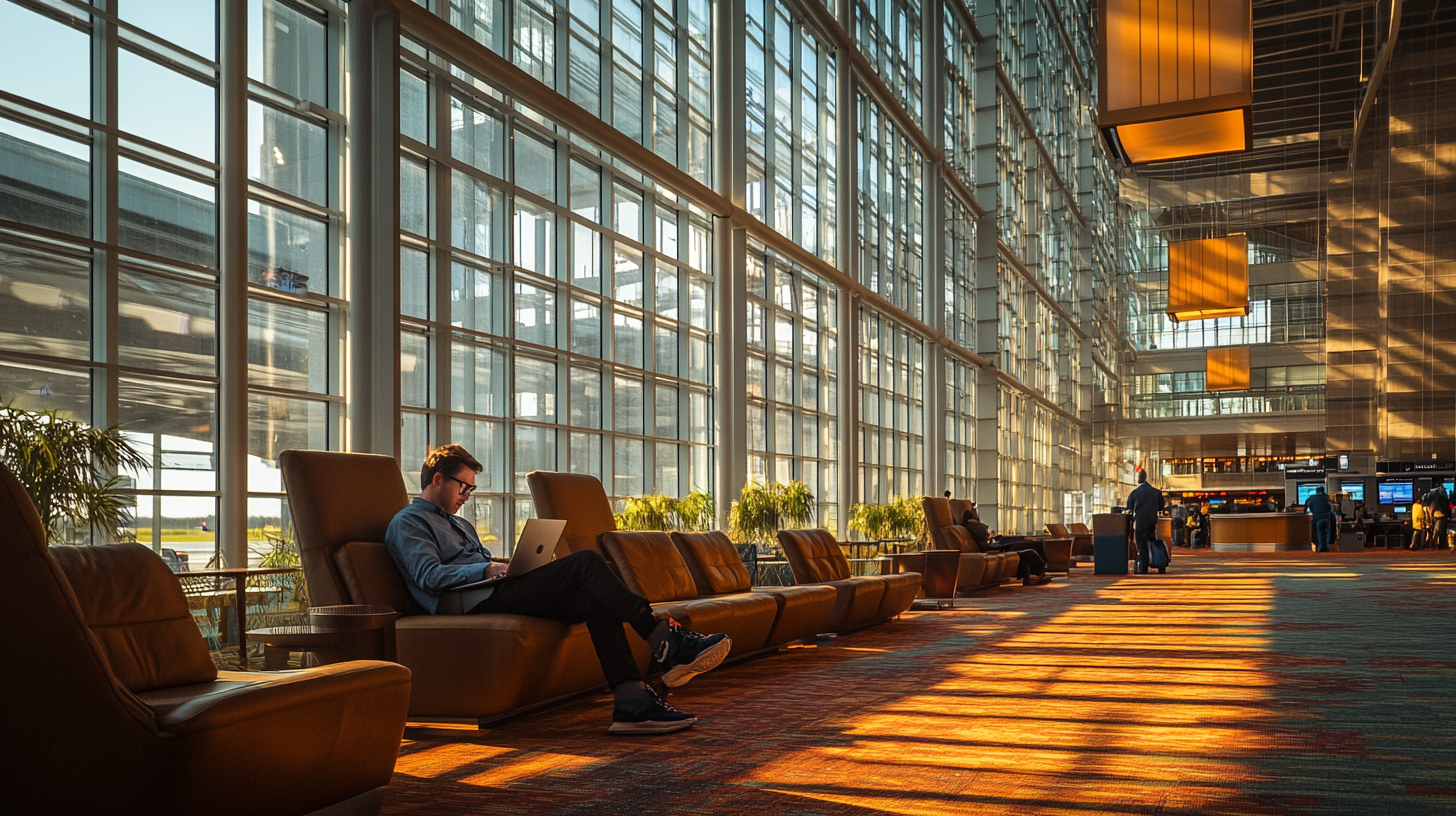
Dulles International Airport deserves special recognition for boasting the fastest Wi-Fi speeds among the surveyed airports—a critical factor for remote work. High-speed internet facilitates seamless virtual meetings, rapid data transfers, and uninterrupted access to online platforms. For professionals who rely heavily on digital connectivity, IAD offers an environment that supports the demanding requirements of modern remote work.
Airports Less Ideal for Remote Work
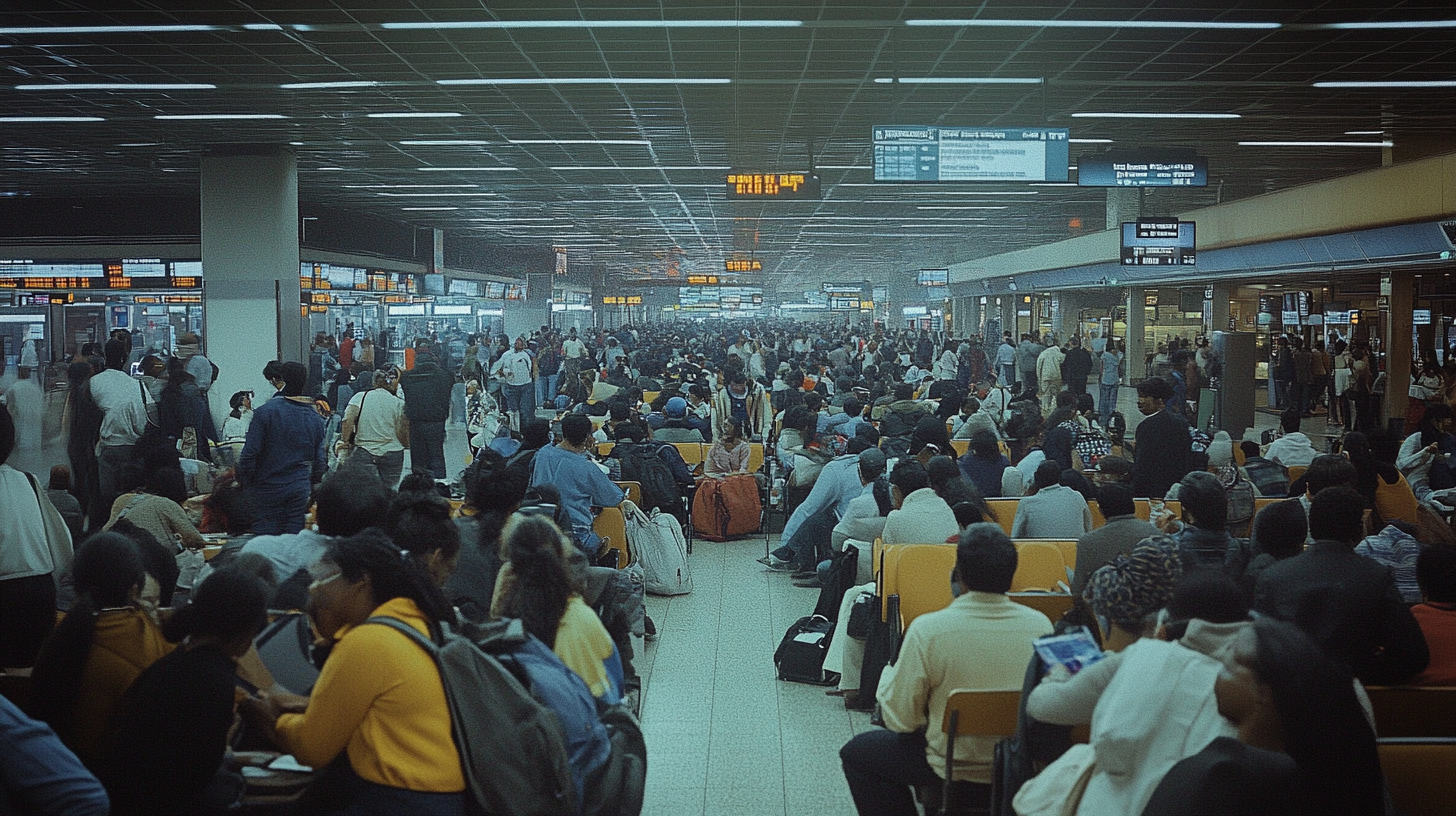
While many airports are enhancing their amenities, some lag behind in accommodating remote workers, presenting challenges for those needing to maintain productivity during travel.
Southwest Florida International Airport (RSW)

Ranking lowest in the Upgraded Points analysis, RSW falls short due to limited charging stations and slower internet speeds. The scarcity of food options and lounges further detracts from its suitability for extended work sessions. Remote workers passing through RSW may find it difficult to find adequate spaces to focus and stay connected, highlighting the importance of planning ahead when traveling through less-equipped airports.
Orlando International Airport (MCO) and Denver International Airport (DEN)
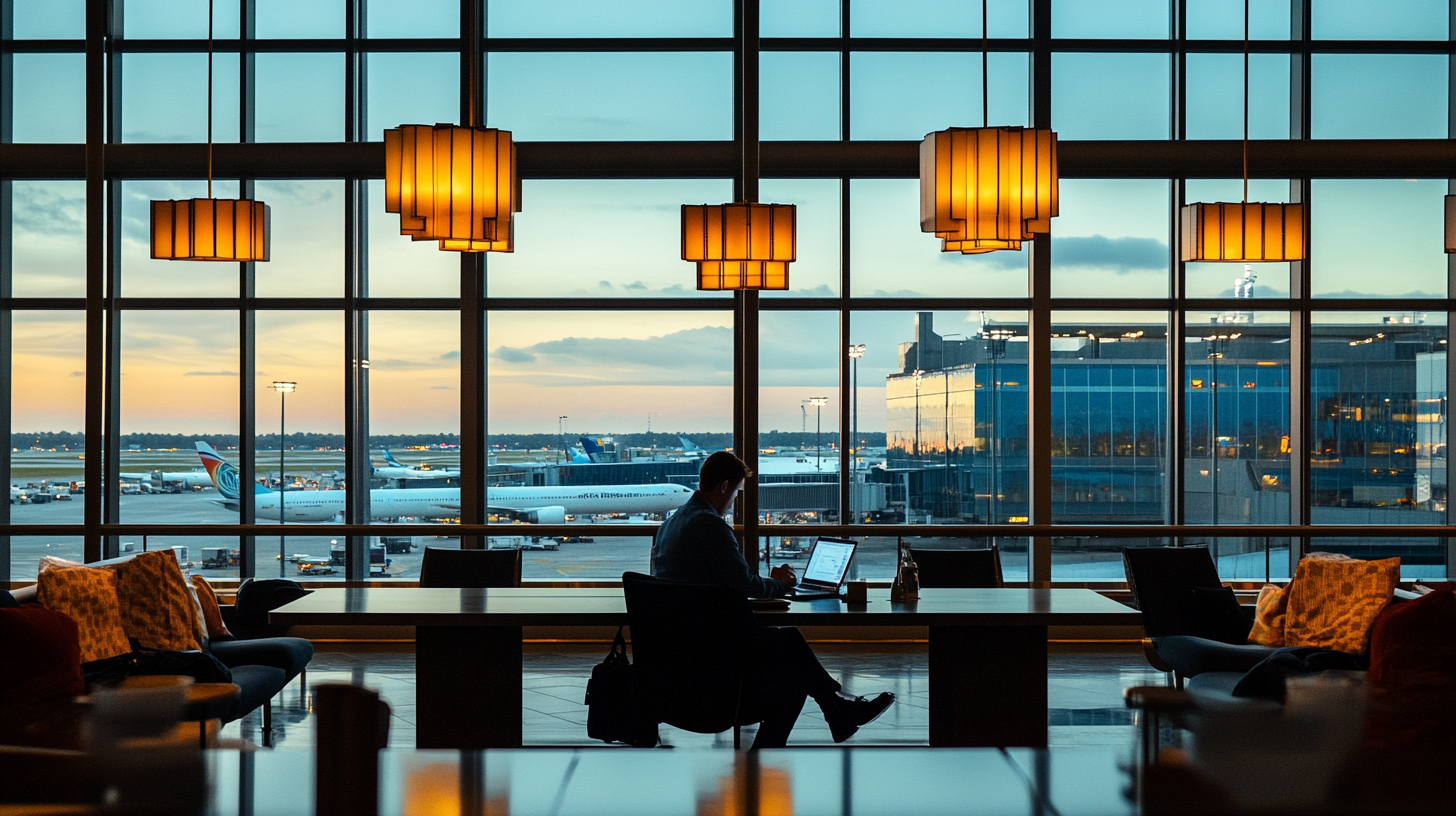
Both MCO and DEN face challenges with low internet speeds and fewer amenities geared towards remote work. The limited availability of quiet spaces and essential resources can hinder productivity. Travelers relying on stable connectivity and conducive work environments may need to explore alternative options or adjust their schedules to mitigate these limitations. Understanding the facilities of these airports is crucial for professionals aiming to maintain their workflow uninterrupted.
Adapting Airport Facilities for Remote Work

Recognizing the growing demand, airports worldwide are integrating coworking spaces into their terminals. These innovative adaptations are transforming waiting areas into productive workspaces, blending the convenience of airport facilities with the functionality of modern offices.
Innovations in Airport Coworking Spaces

- Amsterdam Airport Schiphol: Introduced the Spaces Lounge, offering meeting rooms, high-speed Wi-Fi, and power outlets for a fee. This dedicated area provides an office-like environment where travelers can hold meetings or focus on complex tasks without interruptions.
- Frankfurt and Dubai International Airports: Implemented coworking areas to provide travelers with dedicated work environments. These spaces are designed with productivity in mind, featuring ergonomic furniture and quiet zones that cater to the needs of remote professionals.
- Jabbrrbox: Offers soundproof booths in various U.S. airports, providing privacy for calls and recordings. These booths are equipped with secure Wi-Fi and charging ports, enabling users to conduct sensitive business communications or creative work in a secluded setting.
Security Considerations for Working Remotely from Airports
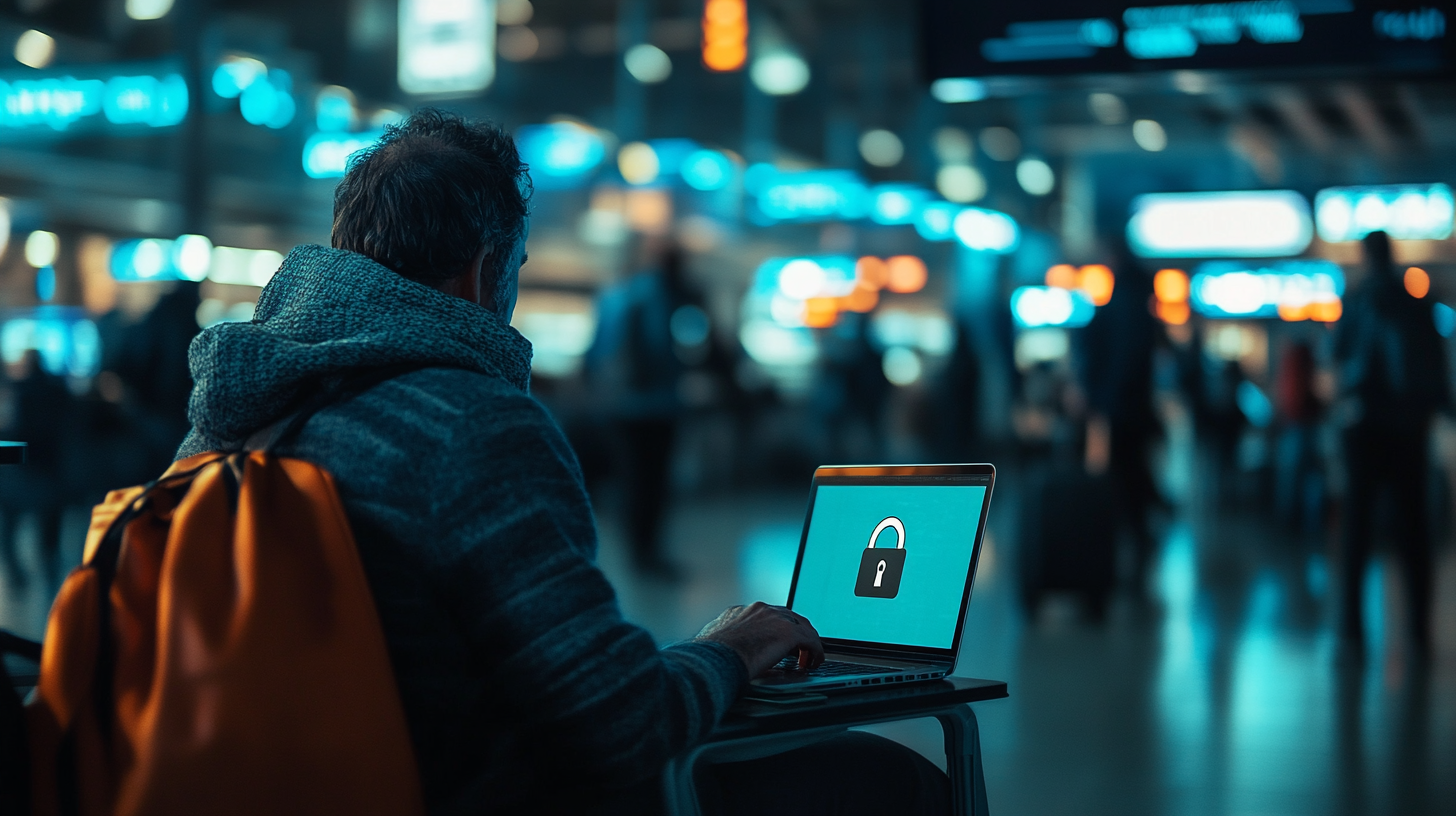
While airports offer convenience, they also present security challenges. Protecting your digital assets is paramount when connecting to public networks, and being mindful of potential vulnerabilities is essential for any remote worker.
Tips to Secure Your Digital World
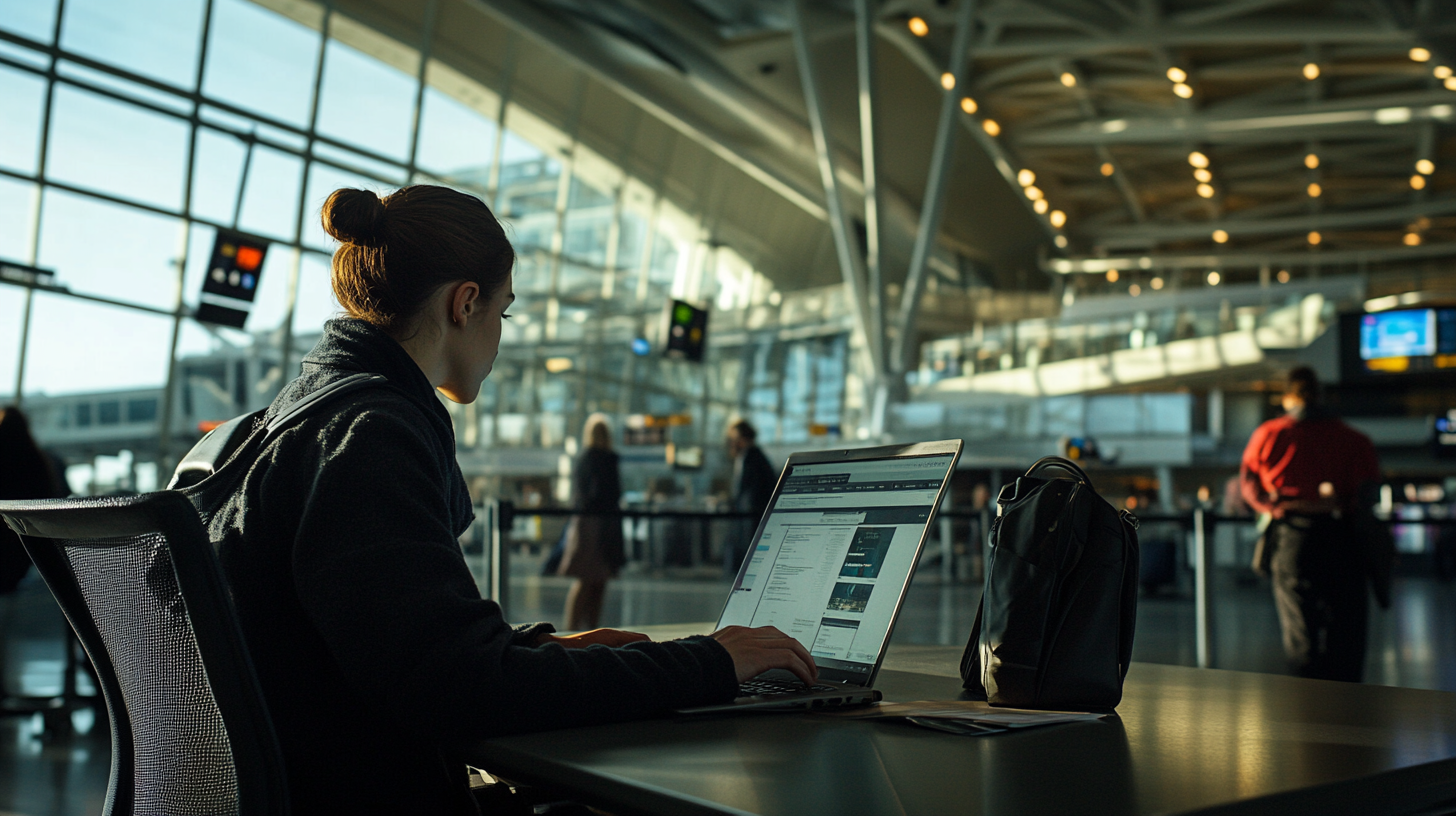
- Backup Important Documents: Use cloud storage solutions to safeguard essential files against potential loss. Regular backups ensure that your work is not compromised in case of device theft or failure.
- Minimize Sensitive Data: Carry only what you need and encrypt files for added security. Limiting the amount of sensitive information on your devices reduces the risk of data exposure.
- Keep Devices Updated: Ensure all devices have the latest security patches installed. Software updates often include fixes for vulnerabilities that could be exploited by malicious actors.
- Use Strong Passwords and MFA: Employ unique passwords and enable multi-factor authentication to add an extra layer of security to your accounts.
- Be Cautious with Public Wi-Fi: Avoid conducting sensitive transactions on unsecured networks; consider using a VPN to encrypt your internet connection. Refer to Guidelines for Safe Public Wi-Fi Usage for detailed strategies on staying secure.
- Avoid Public Charging Stations: Use your own charger to prevent potential data breaches through compromised ports, a practice sometimes referred to as “juice jacking.”
- Turn Off Bluetooth: Disable when not in use to prevent unauthorized access and potential device pairing by unknown users.
Opportunities in Remote Airline Jobs

The aviation industry is also embracing remote work, offering various positions that allow professionals to contribute from anywhere. This shift not only benefits employees seeking flexibility but also enables airlines to tap into a broader talent pool.
Remote Positions in the Airline Industry

Airlines are expanding their remote workforce, particularly in customer service roles. Companies such as Alaska Airlines, American Airlines, and Delta Air Lines offer positions that often include travel perks like free or discounted flights, hotel discounts, and rental car deals. While these roles may require proximity to a call center for initial training, they provide flexibility and the opportunity to work within the travel industry. By leveraging technology, airlines can maintain high levels of customer support while offering employees the benefits of remote work.
Other Remote Roles
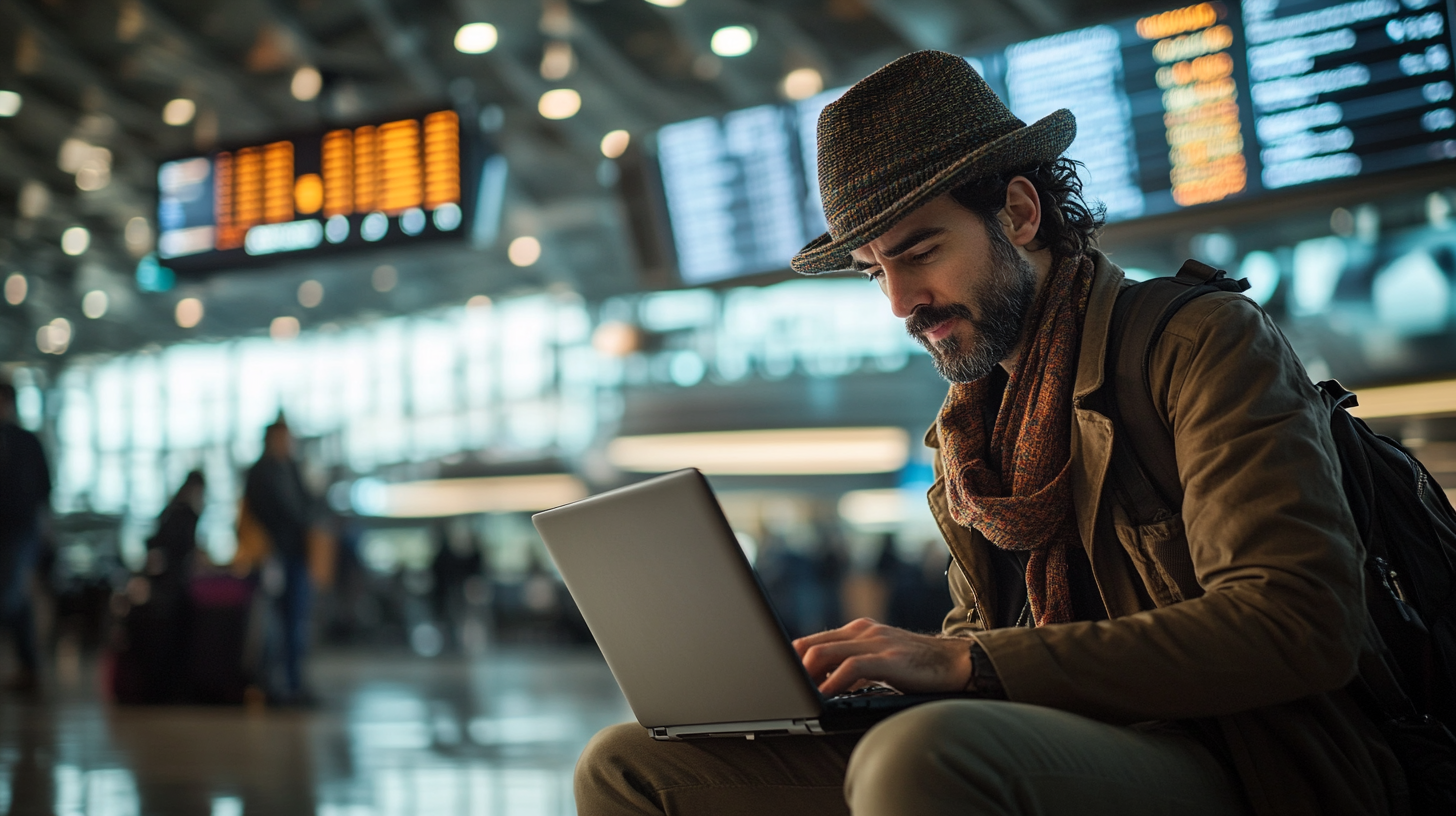
- Aviation Writers: Create content related to the aviation industry, sharing insights and developments with a global audience.
- Safety Specialists: Oversee safety protocols remotely, ensuring compliance with industry standards and regulations.
- Insurance Underwriters: Assess risks and determine policy terms for aviation clients, providing crucial support from remote locations.
- Marketing Specialists: Develop and implement marketing strategies to promote airline services and engage customers.
- Training Instructors: Provide remote training sessions for airline staff, utilizing virtual platforms to educate and certify employees.
- IT and HR Specialists: Support organizational needs from afar, managing technical systems and human resources functions.
- Data Analysts: Interpret data to inform business decisions, analyzing trends and performance metrics remotely.
The Broader Trend: Remote Work Culture
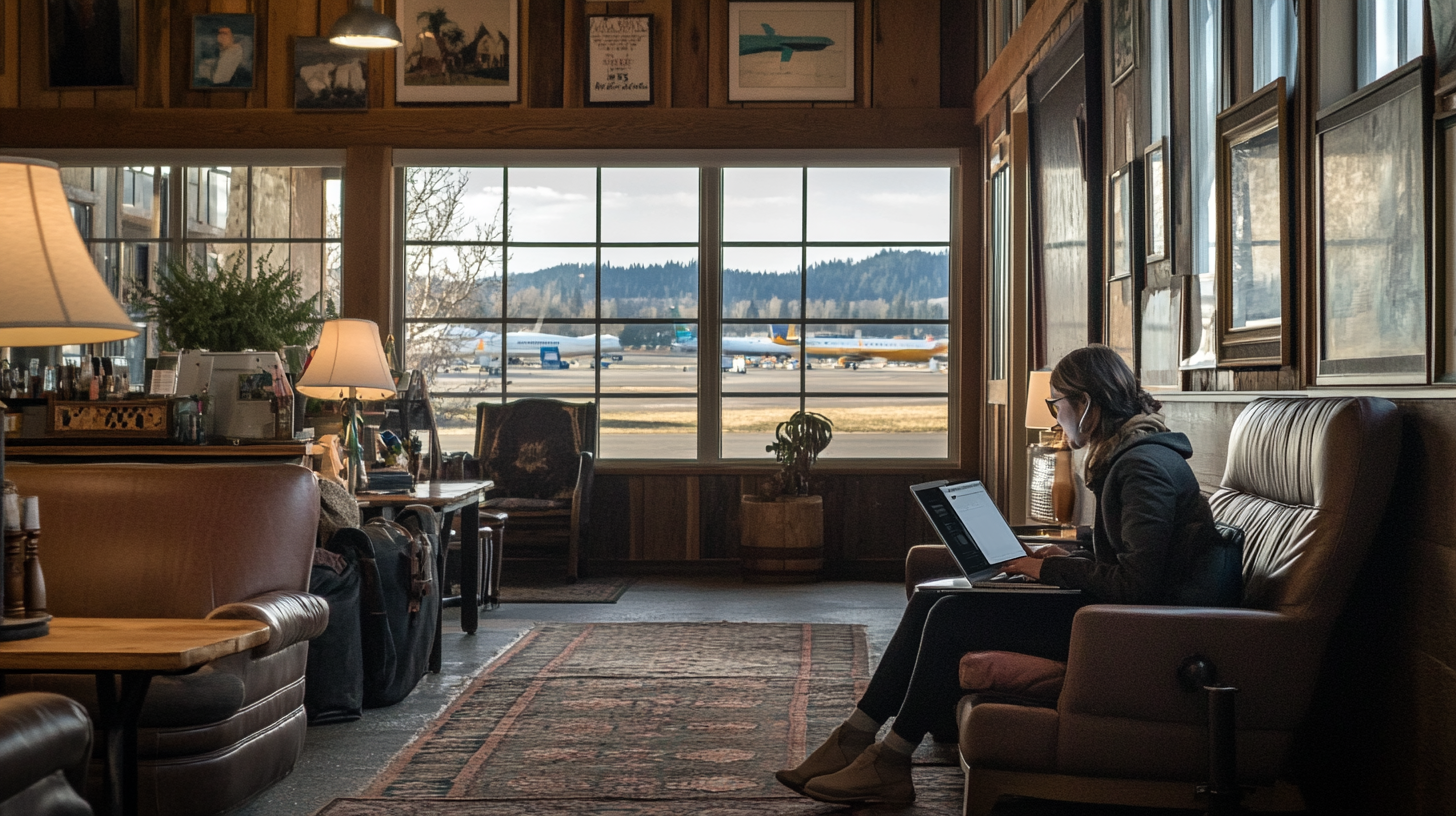
Remote work trends vary globally, influenced by cultural and economic factors. In the United States, known for its entrepreneurial spirit, approximately 14% of workers are fully remote, driven by innovation and flexibility. This shift reflects a broader acceptance of non-traditional work environments and a recognition of the benefits they offer. The United Kingdom adopts a more measured approach, with 13% fully remote and 28% operating in a hybrid model, balancing traditional office settings with remote work to optimize productivity and employee well-being.
Embracing Small Towns and Alternative Workspaces
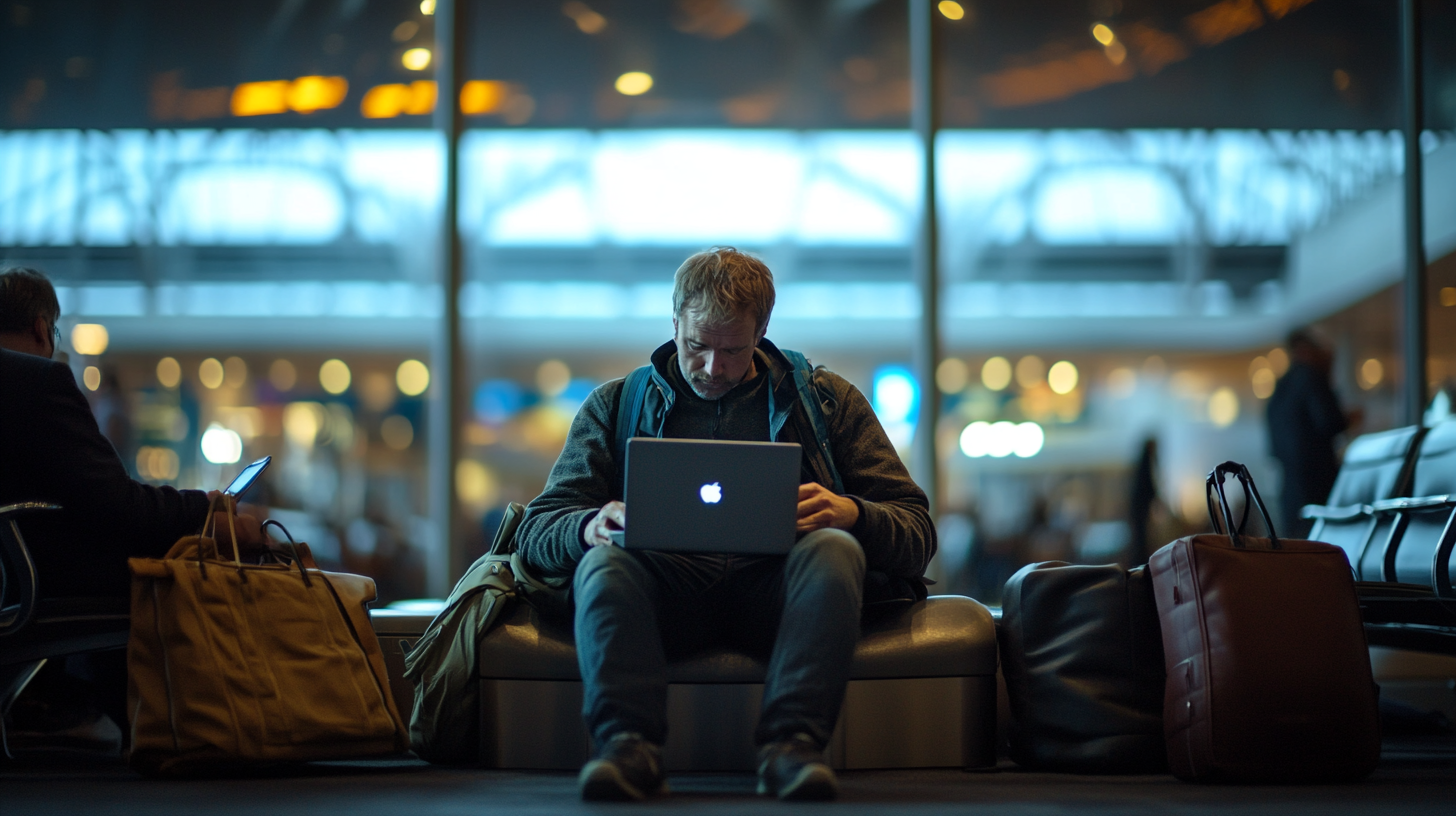
The freedom afforded by remote work has led to an increase in professionals settling in small towns that offer a balance of productivity and lifestyle. Towns like Fredericksburg, New Hope, Camden, Sitka, Lanesboro, and Shepherdstown provide unique environments that cater to digital nomads seeking both efficiency and recreation. These communities often feature cozy coffee shops, serene natural landscapes, and a slower pace of life, making them ideal for those looking to escape the hustle of big cities while maintaining their careers. Exploring Guide to Remote Work-Friendly Small Towns can offer insights into finding the perfect location that aligns with professional and personal preferences.
Final Thoughts
Working remotely from airports is no longer a novelty but a necessity for many in today’s hybrid work environment. As airports enhance their facilities to accommodate this shift, remote workers can capitalize on these developments to maintain productivity while traveling. Follow us back to Seat 5A for more insights and updates on remote work trends.






